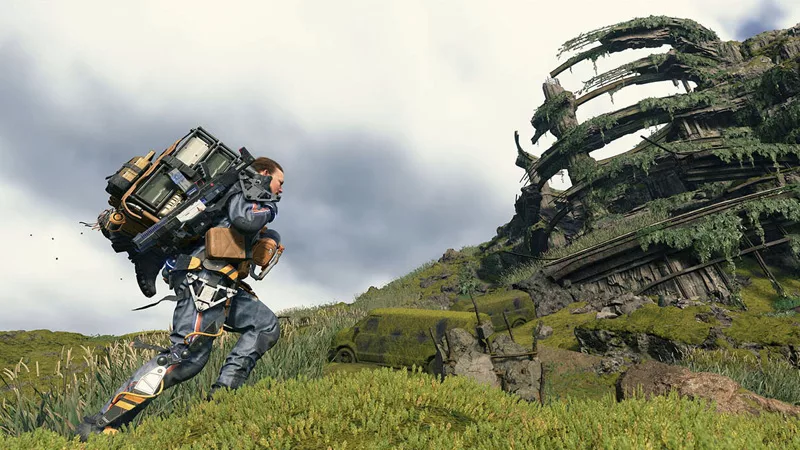Knights of the Old Republic still offers an epic journey to that galaxy far, far away
“There is no emotion; there is peace. There is no ignorance; there is knowledge. There is no passion; there is serenity. There is no chaos; there is harmony. There is no death; there is the Force,” I recited for my Jedi Master. He praised my memorization and instructed me to begin assembly of my lightsaber. I wasn’t too picky about the color, but I had my heart set on a double-bladed weapon. Once my lightsaber was completed and glowing a vibrant green, he congratulated me for passing the Jedi Trials and granted me the title of Padawan. I had taken my first step on the path to bringing balance to the Force and peace to the Republic.
Star Wars: Knights of the Old Republic (KOTOR) gave fans a chance to write their own Star Wars story at a time when the franchise was being given new life by the prequels. Released in 2003, directly between The Phantom Menace and The Attack of the Clones, this classic RPG from Bioware was praised by Star Wars fans and regular gamers alike. KOTOR managed to create an original yet canonical story that let players make their own mark on the galaxy. Set 4,000 years before the events of the main movies, KOTOR introduces familiar faces and names as well as more depth to the existing Jedi vs. Sith narrative.
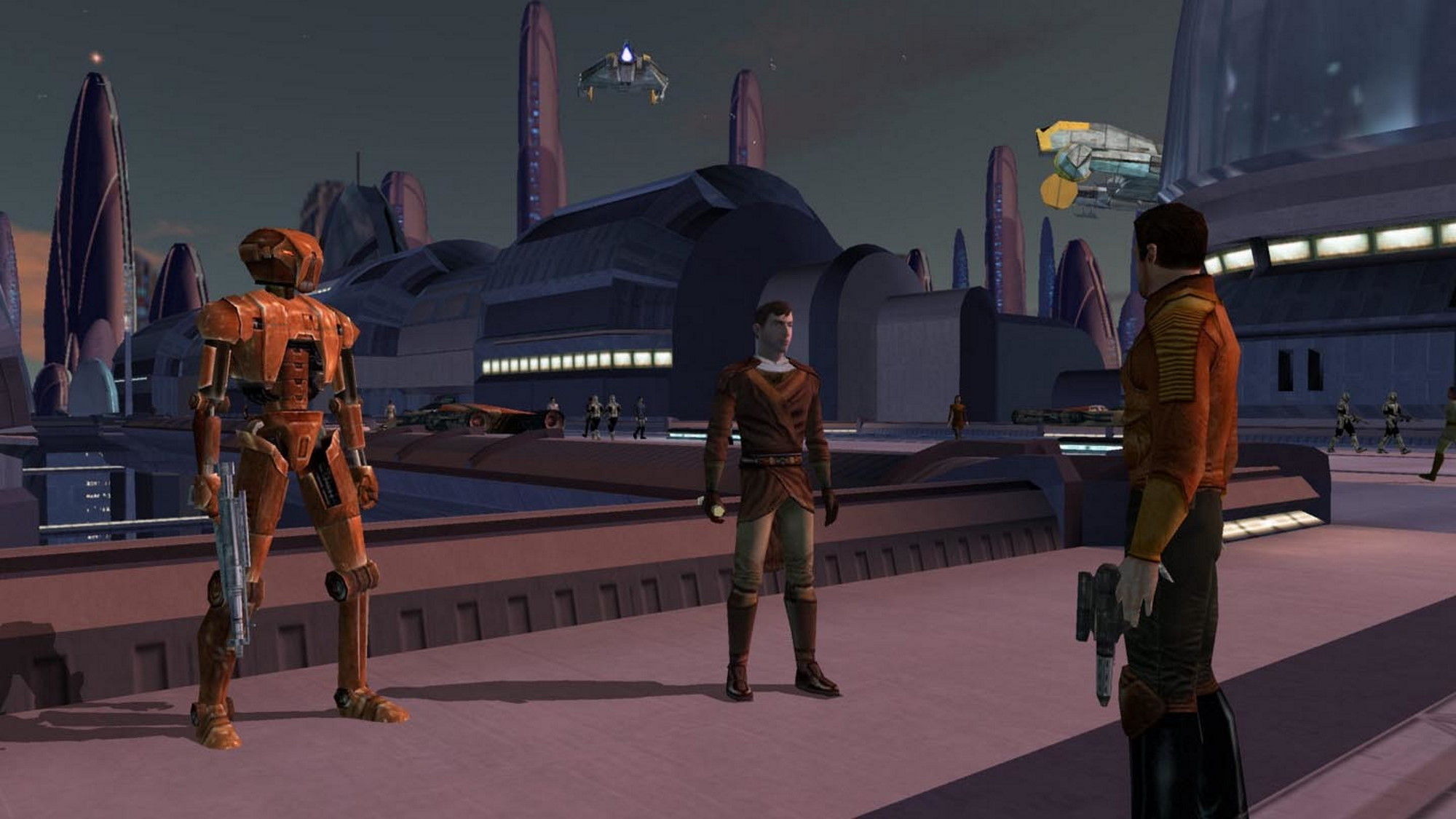 Image source: Gamesplanet
Image source: Gamesplanet
The title launched 18 years ago on the original Xbox, yet I'm impressed with how well its graphics have aged. At 1600x1200, the highest resolution available without modding, most textures avoid pixelation or noticeable fuzziness. This attention to detail really shows in the Ebon Hawk, my main character’s version of the Millennium Falcon. It’s remarkably well textured compared to other interior locations and even seemed like a real-life spaceship once I collected all my NPC companions. The game’s faces and skyboxes do remind me just how far in-game game graphics have progressed in the last twenty years, but I was pleasantly surprised with the vibrancy and glow of the lightsabers in game. The developers really managed to capture the essence of Star Wars’ iconic weapon.
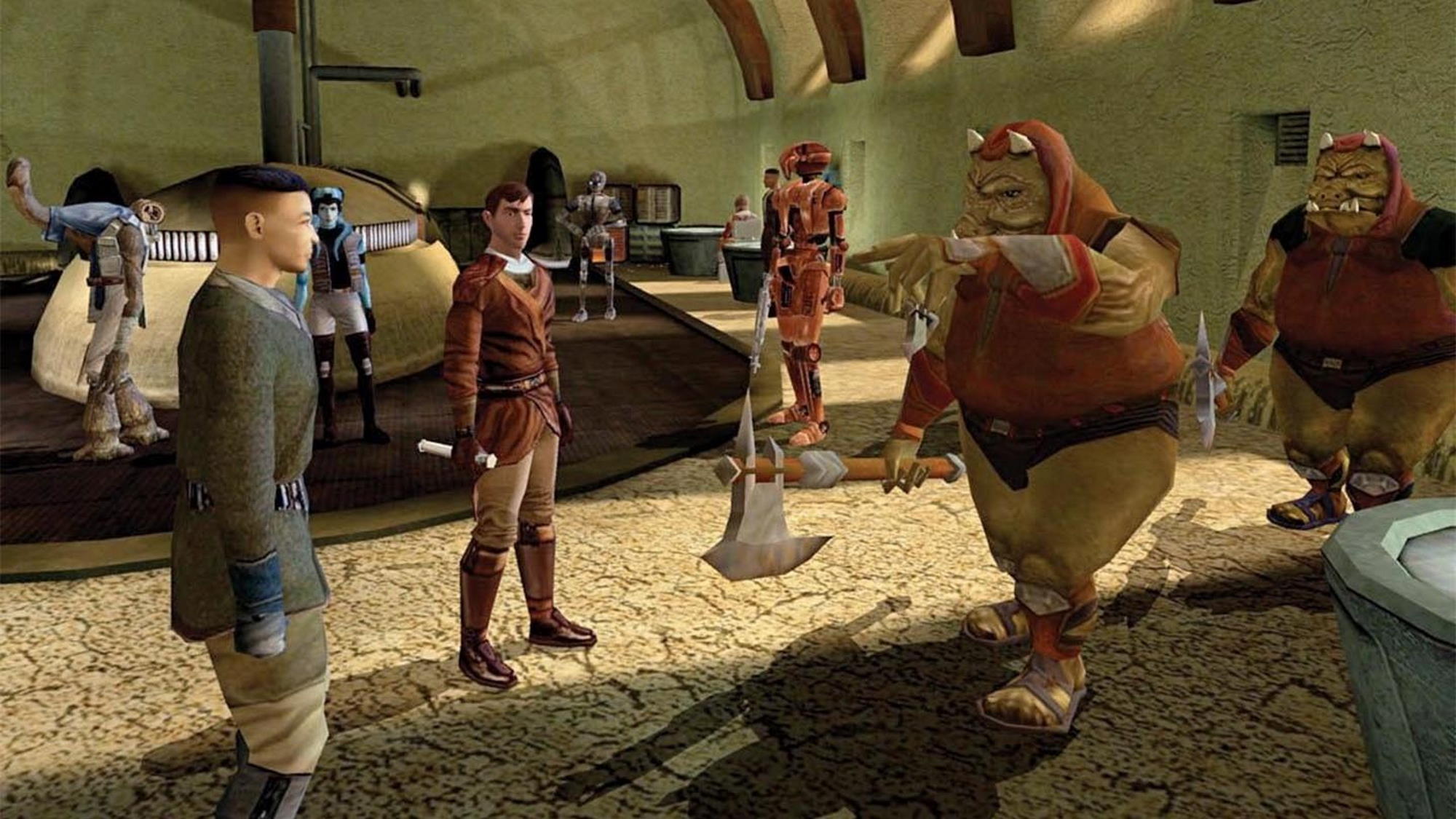 Image source: Gamesplanet
Image source: Gamesplanet
Throughout my playthrough, the sound design of KOTOR reinforced the setting and story in subtle ways. The game convincingly recreates blaster fire, alien languages, and iconic lightsaber hum. Excluding the main character, this game is fully voice acted, including all the alien languages. Twi’lek, Wookie, Hutt, and Sand People dialects are all represented, among others less familiar. The carefully crafted and canonically faithful audio connects me with my earliest Star Wars memories. While graphics have improved noticeably over the years, the sound of a lightsaber today sounds much the same as it did in 1977.
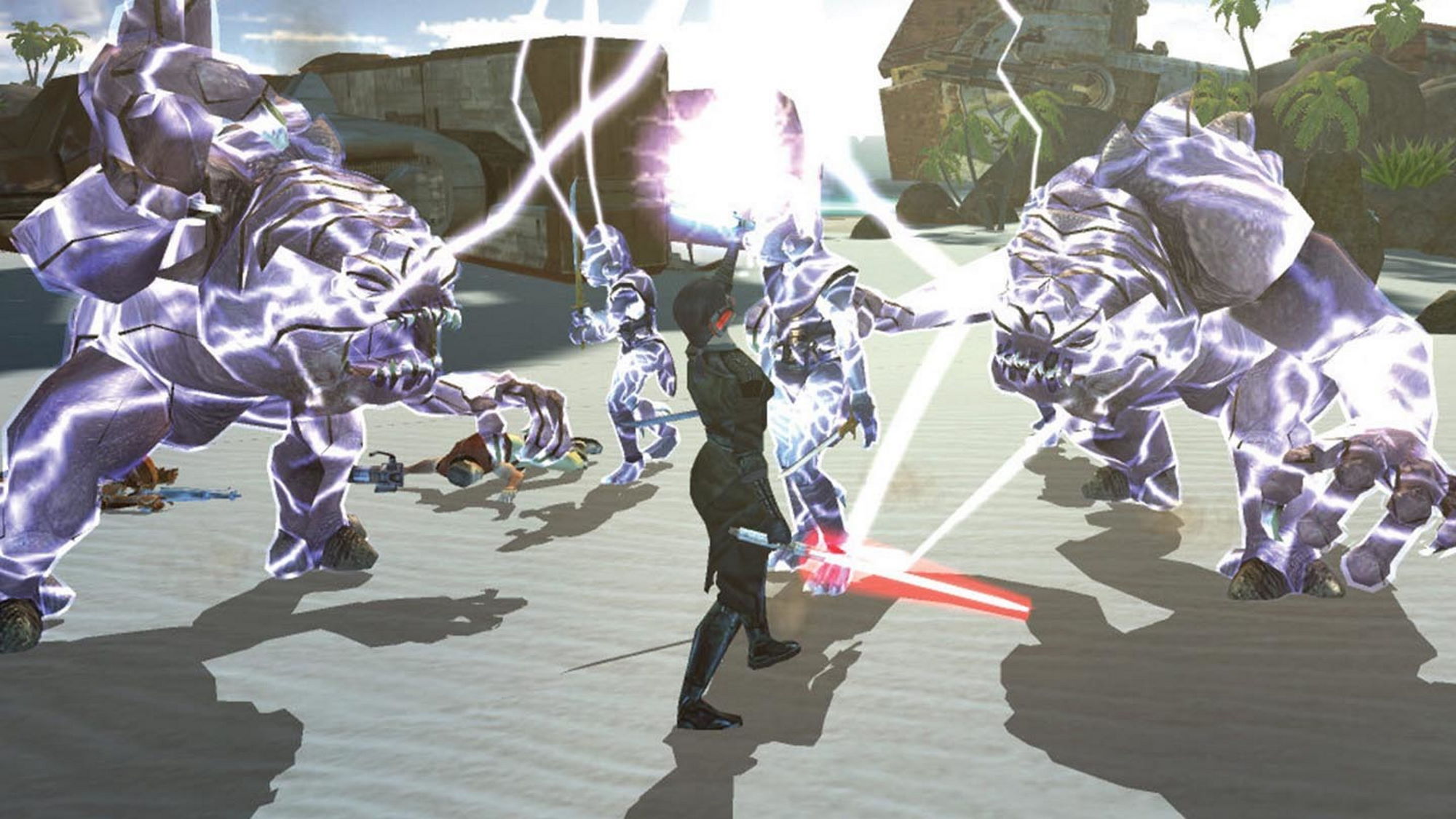 Image source: Gamesplanet
Image source: Gamesplanet
The freedom in character design that the game gives me is also impressive. KOTOR is a full-fledged RPG, and it allows me to choose between three character classes at the start of the game, along with a range of weapons, equipment, armor, skills, and Force powers once I learn the ways of the Jedi. Optimizing my strategy through party composition and weapon choices is important, especially in the early game when my Force powers are limited. Once I have enough Force powers and regular abilities, I’m equipped for most situations regardless of my team composition. My skill choices are especially important because there’s just no way for me to have them all. There are over three times as many skills as skill points to spend on them, so I have to choose wisely, and there’s real potential for every playthrough to feel substantially different from the last.
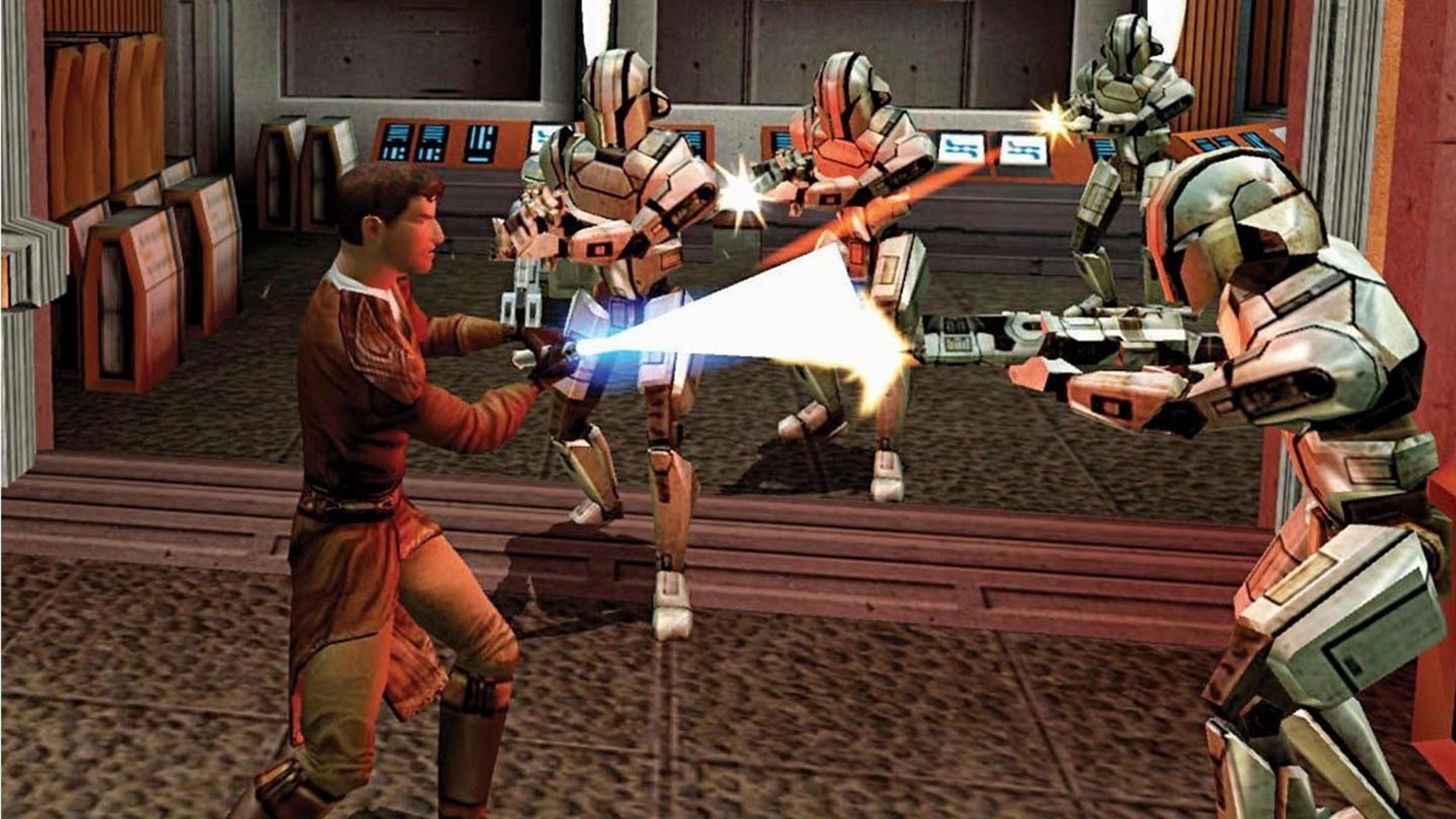 Image source: Gamesplanet
Image source: Gamesplanet
Another facet of this game that aged well is the combat system. Under the hood, it’s a classic turn-based RPG. Dice rolls determine combat events like attacks, defense, critical hits, and fortitude saves. All that happens behind the scenes, though, thanks to some remarkable sleight of hand that makes combat appear real-time—until I hit the pause button to refine my strategy. I can stop time to give my party step-by-step instructions on what ability to use and who to use it on. Against more powerful enemies or large groups of mobs, that granularity is incredibly helpful. On harder difficulties, it goes from a nice option to an essential step in winning each battle.
KOTOR’s low-polygon environments pale in comparison to what we see in modern games, but its vivid dialogue and well-defined characters are timeless. Some of the sidebar conversations among party members are worth the price of admission all by themselves. Once time, one of my “scoundrel” members was talking with a Jedi teammate. They got into an argument, and Bastila used the Force to push Mission over after calling her a child. KOTOR also introduced the world to the infamous assassin droid HK-47. He has a habit of calling organics “meatbags” and ridiculing people whenever possible. On a dark side playthrough, HK-47 is especially entertaining. He tends to encourage the very worst in human nature, often with hilarious consequences. For the run I used to gather impressions for this article, I crafted a light side character, but I still considered keeping HK-47 around for a few missions just to hear his banter.
One of these missions included taking down a Krayt Dragon on Tatooine. While I was no pushover at that point in the story, the game was careful to inform me that a Krayt Dragon is among one of the most dangerous creatures in the galaxy. A local member of the Hunter’s Guild enlisted me to use Banthas as a bait to lure the dragon out of its cave and into the path of waiting explosive mines. I was instantly reminded of the same scene from the Disney TV show The Mandalorian. If they copied the scene as an homage or Easter egg from KOTOR, then hats off to them.
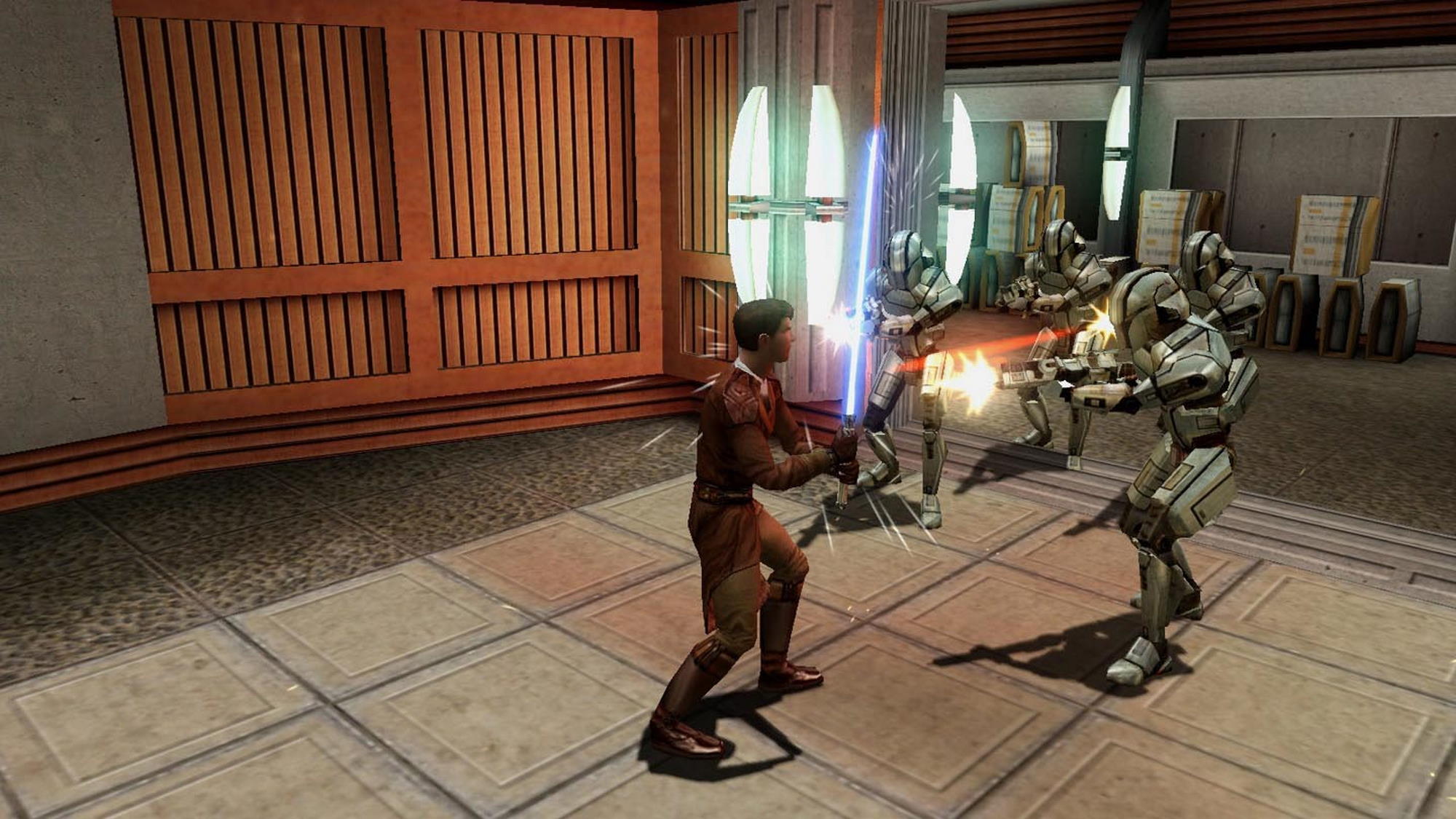 Image source: Gamesplanet
Image source: Gamesplanet
Thanks to its faithful adherence to the canon, KOTOR gives franchise fans a real opportunity to dive into and learn more about Star Wars. My main character, formerly known as Darth Revan, is one of the best-known characters of his era. His struggle against the Mandalorians and the Jedi set the context for the events in the original films and the eternal struggle of the Jedi vs. the Sith. KOTOR has all the mystery, action, and surprise twists of any blockbuster movie, with many moments of levity in between.
If you haven’t already, I highly recommend you check this classic game out. It is absolutely worthy of your attention and served as a building block for many great RPGs that came after it. If, however, you have more high-resolution tastes, the spirit of KOTOR lives on in the free-to-play MMORPG Star Wars: The Old Republic. That title is a more updated game that is set in the same time period with similar stories to share. No matter how you choose to play, the timeless characters and mysteries of the Old Republic will keep you enthralled.
By Lane Prescott
